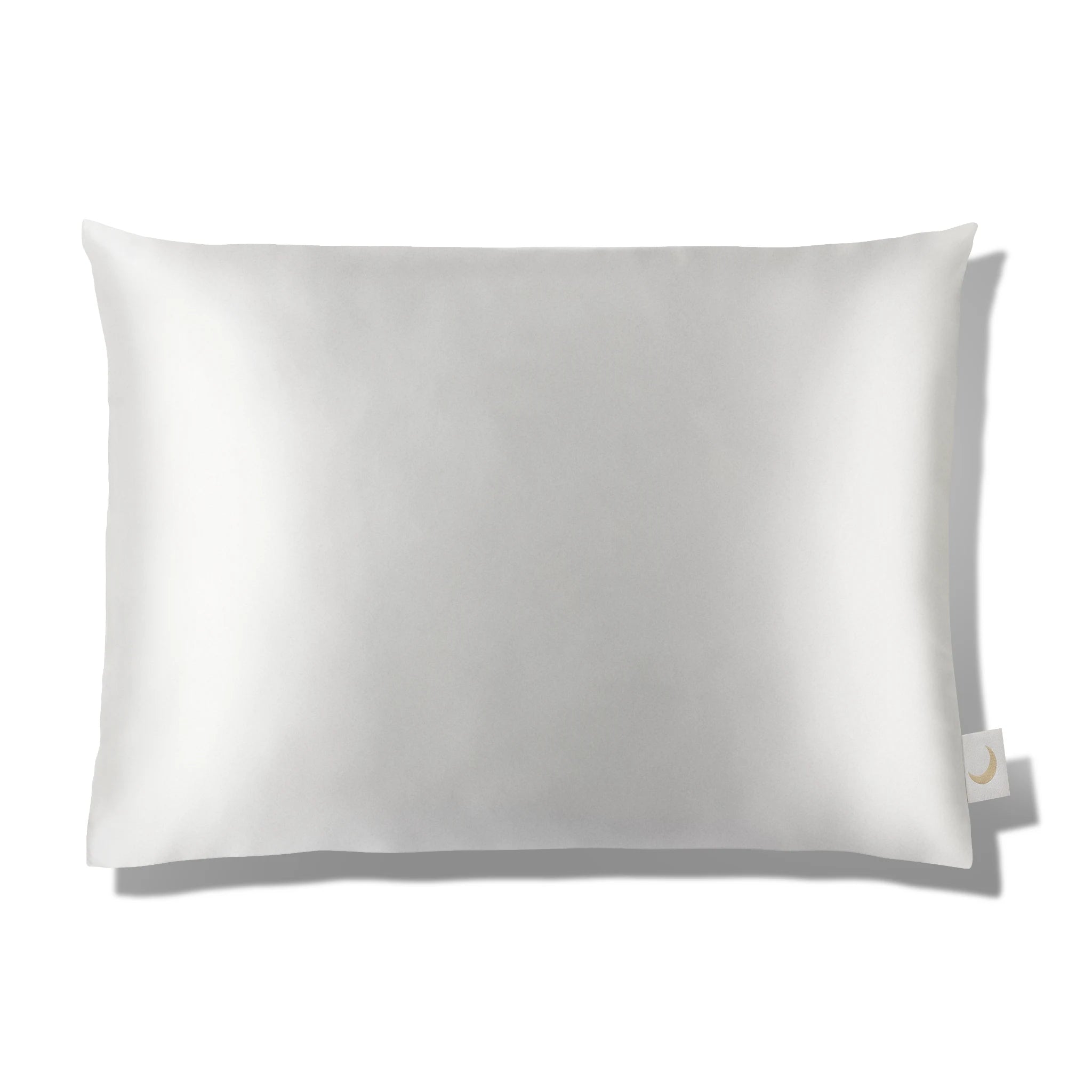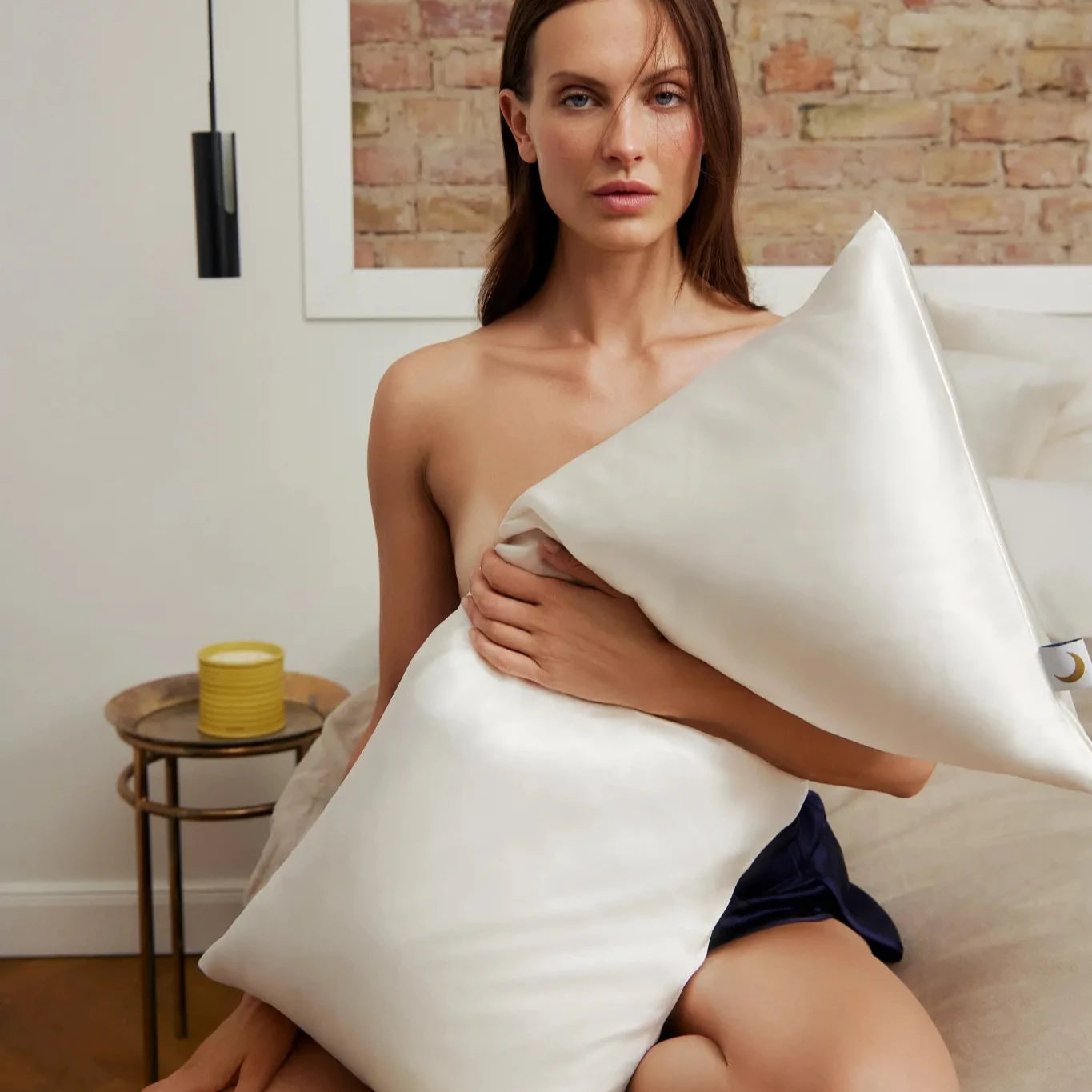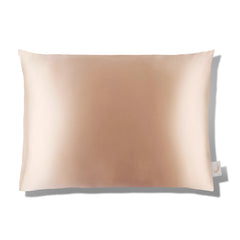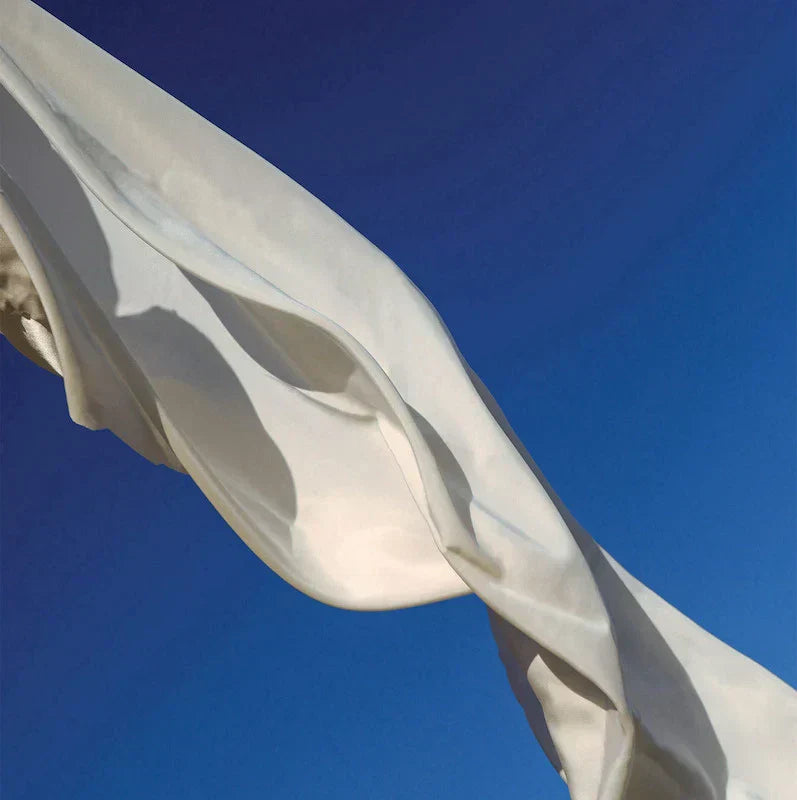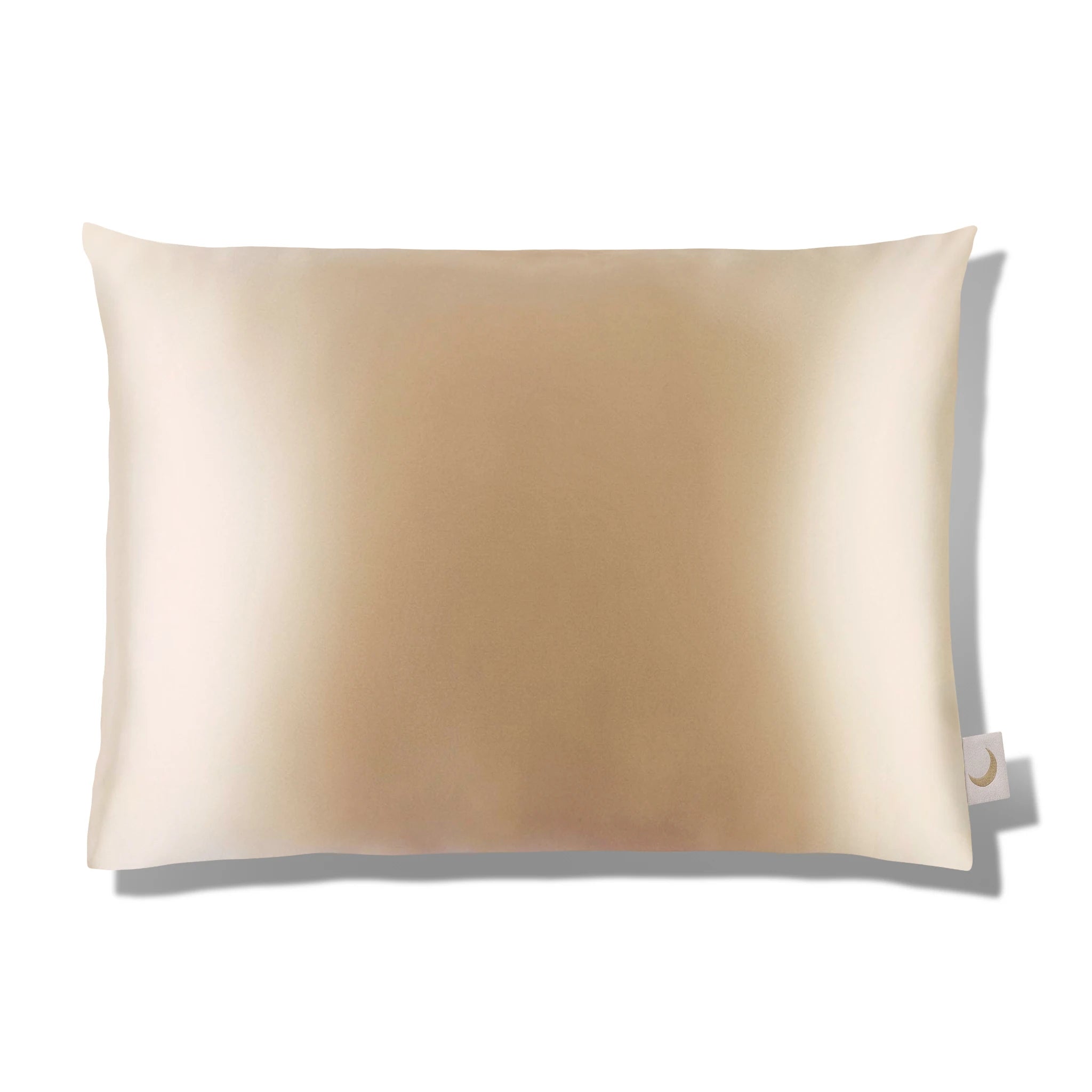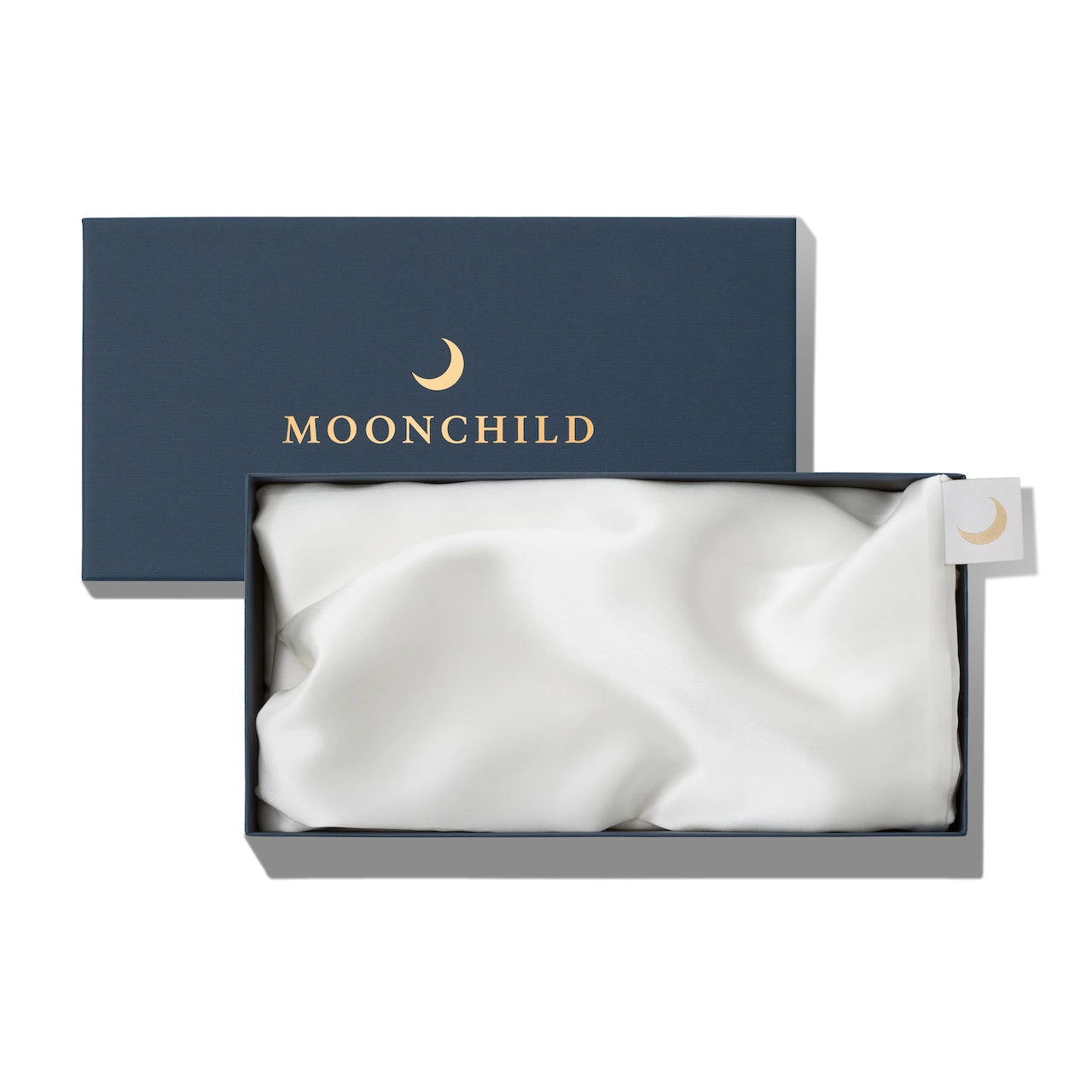4 min read. Is there a difference between satin and silk? What are the benefits of each?
1. The difference between Sateen, Satin and Silk Pillowcase
Satin and silk are often used simultaneously but are, in fact, not the same. Whereas sateen and satin are the same, the differences between satin and silk are probably not familiar to everyone. Let us dig a little deeper to get to the bottom of all satin vs silk myths.
Satin is the way a fabric is woven. A satin fabric can be made of many fabrics, such as cotton, polyester - or silk. Whereas silk is the fabric itself. Silk is a 100% natural protein, that is gained from the cocoons of silkworms. Silk satin is the shiniest and softest weave that can be obtained from silk due to its special satin weave pattern: four or more weft threads go over one warp thread. This makes satin silk ultra-durable and at the same time hardy and dense. Common silk weave alternatives to satin would be twill, chiffon or crėpe de chine.
2. Satin vs Silk Pillowcase
It can be quite confusing as there are many 'satin pillowcases' out there which are most likely made of polyester when 'silk' is not mentioned in the product's description. Polyester is an industrially made product that requires less intense labour and is, therefore, less costly than natural silk. Satin is often called 'vegan silk' or 'silky satin' but means no other than polyester. Read our comparison of vegan silk alternatives.
3. Silk or Satin Pillowcase? What to buy?
We often hear: 'I don’t like the feeling of silk bedding on my skin' and when we question this we get to know that satin instead of silk bedding is meant. When you were a nineties kid you probably remember that ultra-shiny bedding - but that again, was most likely not silk but a 100% polyester satin bedding.
Silk is called the queen of fabrics due to its many benefits given by nature. The fabric has the ability to balance temperature and moisture - which helps create an ideal sleep environment at night. Silk is ultra-durable and long-lasting. Genuine silk is naturally anti-microbial, anti-fungal and a great aid for those with allergies. Dirt and dust won’t build up in satin silk due to its high density. Read on in our benefits of silk article. So the question of what to get, a silk or satin pillowcase is easily answered with: both in one!
4. A Silk or Satin Pillowcase for hair
The best choice to maximise the benefits of both would be a Satin Silk Pillowcase in order to unify the benefits of both. A shiny satin weave and the soft silk in combination gives us all our hair and skin can benefit from at night: less friction and less resistance on an ultra-soft surface. Silk won’t draw moisture away and won’t soak off precious skin- and haircare overnight. Read on how silk helps prevent wrinkles and split ends.
All the mentioned benefits of silk are only found in natural silk. The closer silk is left to its natural state, the greater its beautifying superpowers. Organic Peace Silk itself and the process of production are completely organic.
5. Satin vs Silk: Which is smoother?
We now know that ultimate smoothness is obtained once both are combined: a silk fabric in a satin weave. A satin pillowcase made from synthetic fibres may be smooth, shiny and cause less friction, but won’t have any of the other superpowers of genuine silk. Do not be tricked by the surface and shine. It is worth examining whether or not to get a silk or satin pillowcase for many reasons: sleep climate and hygiene, moisture - and temperature balance, environmental impact, and longevity to name but a few.
6. How to tell: Satin vs Silk?
If you read through the whole article, you probably already know the difference of satin and silk. So let us see how to distinguish genuine silk from synthetic satin fabric.
- Silk has a quite multi-coloured sheen. Just think of mother of pearl rather than a vinyl-like mono-toned solid shine. If satin shines too much, it might either be polyester, a polyester blend or the silk is soaked in layers of silicone finishes. Either way - too much shine is an indicator of synthetic fabrics.
- Another way to tell the difference is to rub the fabric between your fingers. Real silk will become warm, whereas fake silk won’t change temperature.
- The bulletproof way is to burn a thread of the fabric in question. Real silk will slowly burn when exposed to the flame; it stops burning once the flame is removed and smells like burnt hair. Fake silk will melt, smell like plastic and even continue to melt once the flame is removed.
- Another factor is the price. The production costs of silk are many times higher compared to the price of polyester production. If a satin pillowcase is too cheap, it might not be the real deal.
7. What's the Problem with Polyester Satin?
Polyester clothing has notable downsides. It’s non-biodegradable, taking over 200 years to break down, and contributes to landfill waste. Production emits 27.2 kg CO2 eq/kg and uses 125 MJ/kg of energy. Washing releases 0.5M tonnes of microfibers yearly, polluting oceans. Health-wise, it may irritate skin and involves antimony trioxide, a suspected carcinogen. So, yeah, there’s plenty to consider!
Choose a Real Silk Pillowcase!
We benefit from an organic peace silk pillowcase that is 100% natural. The closer silk is left to its natural state, the greater its beautifying superpowers. Quality has its price and a genuine silk pillowcase might be worth investing in, when it lasts longer and helps us sleep better. When we sleep better, we look, feel and act better.
